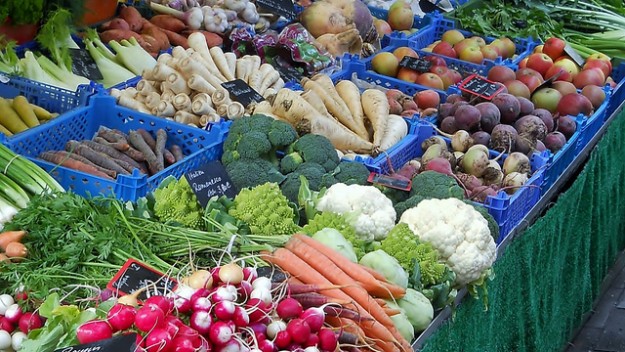According to the most recent chefs’ survey conducted by the Canadian Restaurant and Foodservices Association (CRFA), local, sustainable and organic food make up four of the top five Canadian menu trends for 2011.
So it’s obvious: organic, sustainable, local food is HOT. But it’s also a lot more expensive—an organic restaurant can face up to 20 percent more in start-up costs than a conventional establishment, and organic food can cost between 10 and 30 percent more than non-organic.
And, finally, although 80% of customers say they’re willing to pay more to dine at an environmentally friendly restaurant, the two most popular orders at Canadian restaurants are french fries and a cup of regular coffee.
It’s pretty obvious, then: deciding to serve more organic food at your restaurant can be an uphill struggle. Aside from the challenge of finding providers, you’ve got the somewhat greater hurdle of convincing your customers to pay more.
So how do you take advantage of the trend towards sustainable food, while maintaining your already razor-thin profit margins?
- Be prepared to be flexible, and prep your customers to be the same. If you’re committed to serving local produce, you’re not always going to have top-quality tomatoes. Or peas. Or asparagus. Get your customers used to a shifting menu by having regular prix-fixe or tasting nights, where you can highlight the season’s new tastes. Provide education—a chalkboard highlighting seasonal produce, for example—to help manage customers’ expectations.
- Involve your customers in the process. Hold cooking classes, educational evenings, informational meetings, or provide literature to read—anything to promote the benefits of sustainable or organic cuisine.
- Don’t think you have to go all the way, all at once. Maybe you’ll serve organic meat, but stick to conventional veggies. Or vice versa. Maybe you’ll introduce more organic foods into your kids’ menu. Whatever you decide to do, don’t think you have to completely revamp your entire menu in one fell swoop. Just don’t bill your restaurant as “organic” unless it truly is.
- Investigate creative ways to save on food prep and procurement. In-house butchery and meat smoking, nose-to-tail cuisine—all these measures can help keep food costs down by reducing food waste and paying less for processing.
- Go green—literally. Investigate the feasibility of having a restaurant garden and/or fruit trees. While you probably won’t be growing your own wheat and grinding your own flour, you may be able to grow your own salad greens, herbs and peaches—all saving you money on paying someone else to grow them for you.
- Get your staff on board. Your servers can be the best advocates for your budding organic menu, provided they’re on board with the changes. Training your staff is just as important as marketing to your customers.
- Practice good waste-management techniques. Serve smaller portions, use recipes that stretch ingredients (soup, anyone?), buy smaller batches of food, and meticulously date label all foods.
- Cut expenses elsewhere. Energy costs make up a large part restaurant expenses. Investigate ways to save on energy, and you’ll free up money to spend on higher-quality food. (As a starting point, take a look at our DIY energy audit.)
You don’t have to serve exclusively raw, vegan-friendly food to take advantage of the best practices of sustainable cuisine. Instead, educate yourself about organic and local food, talk to your customers, and decide what measures are best for your establishment.
Have you made the switch to serving more organic or local food? What’s your experience been like? Share your story in the comments section.
Image credit: comprock




















